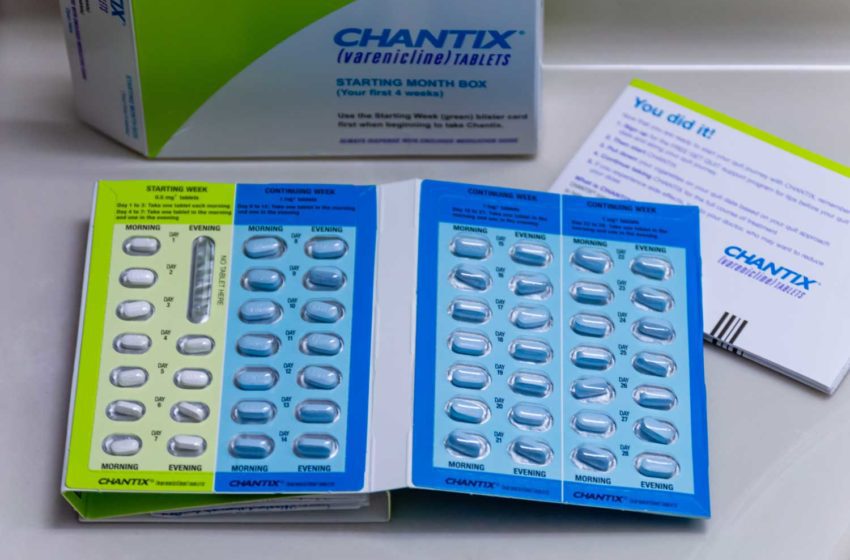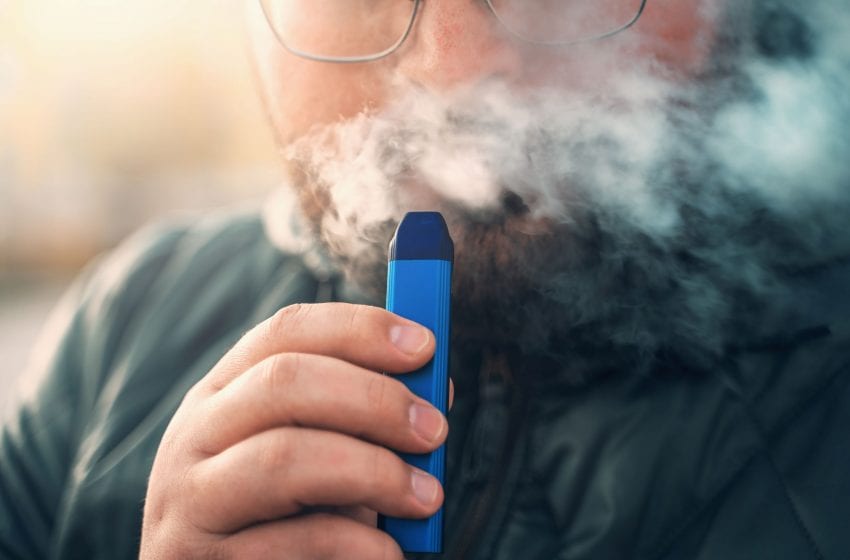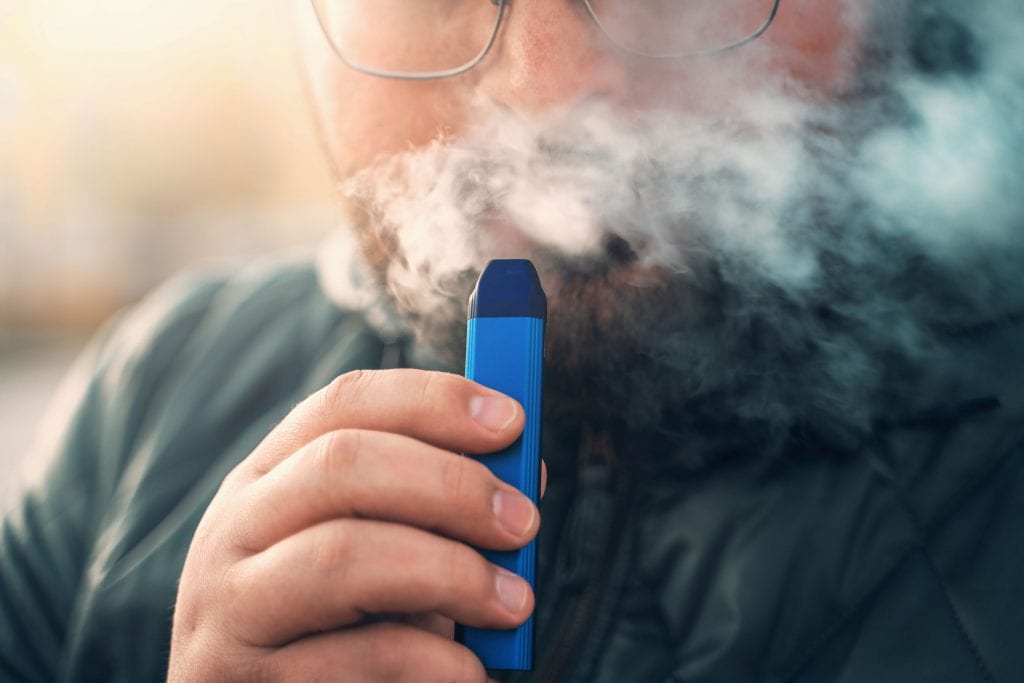It’s harder for women than men to quit smoking. But a new study found that women are even more likely to experience significant improvements in their vascular health within one month of switching to e-cigarettes.
No matter who you are, it’s notoriously tough to quit smoking. But it’s even harder if you’re a woman.
A new study with 200 patients corroborated a plethora of earlier research that concludes it’s harder for women than men to stop smoking. Researchers at the University of Toronto found that women experience more anxiety and depression, which may interfere with their desire and ability to quit smoking.
But another new study has encouraging news for women who switch to e-cigarettes.
That research found that smokers—and particularly women—who switched to e-cigarettes enjoyed a significant improvement in their vascular health within one month of switching.
WHY IT’S HARDER FOR WOMEN TO QUIT
A 2019 study of more than 200 patients at St. Michael’s Hospital in Toronto supports earlier evidence that gender is the biggest factor in the odds of successfully quitting smoking.
This study found that women were roughly 50 percent less likely than men to quit smoking. Researchers said the biggest reason was because women are more likely to have mood disorders; 41 percent of women in the study suffered from anxiety or depression compared to only 21 percent of men.
Beth Abramson, an associate professor of medicine at the University of Toronto and the study’s senior author, said depression and other mood disorders need to be addressed in women who smoke and especially those with a history of heart disease and stroke.
A propensity toward anxiety and depression is not the only factor making it more difficult for women to quit smoking.
The female brain also reacts differently to nicotine, according to epidemiological data that shows women’s brains are more sensitive than men’s brains to nicotine’s deleterious effects.
Although hard-pressed to determine the exact mechanisms underlying women’s greater sensitivity to developing nicotine dependence, researchers from the University of California at Irvine point to “gonadal hormone-mediated sexual differentiation of the brain,” particularly during the perinatal and adolescent periods.
Exposure to nicotine during these developmental periods can produce long-lasting, sex-dependent changes in neuronal structure and function, they concluded.
The study, published in 2017 by the National Center for Biotechnology Information, stresses that there are important age and sex differences in nicotine’s effects and opines that preclinical research into tobacco dependence include these factors.
Other studies conducted at the University of Pittsburgh School of Medicine conclude that women benefit less from nicotine-replacement therapy (NRT) relative to men.
“Smoking cessation treatment for women must address several other issues that often emerge, and these are most likely to require behavioral counseling tailored to these problems,” said Kenneth A. Perkins, who authored the study.
“These issues include concern about bodyweight gain, restrictions on medication use in pregnant smokers, variability in mood and withdrawal as a function of menstrual cycle phase, harnessing social support to foster abstinence, and the possibility that smoking-associated environmental cues may be more influential in smoking behavior in women than men,” he said.
WORRIED ABOUT WEIGHT GAIN
It’s a well-documented fact that most people, and particularly women, are concerned about gaining weight after they quit smoking. There’s good reason for their concern: Researchers estimate that people gain about 10 pounds on average after they quit smoking.
No woman is happy gaining weight, even when she knows that quitting smoking is vital for her health in the long run.
The reason that weight gain is associated with quitting smoking is because nicotine is a stimulant as well as an appetite suppressant.
That’s one of the key factors behind the growth in e-cigarettes; instead of quitting their daily oral habit or nicotine intake, the former smoker is simply quitting the thousands of chemicals in traditional cigarettes, including over 60 known carcinogens. While nicotine is highly addictive, it is not a carcinogen.
Multiple studies confirm that even if you gain weight, it’s still much better to quit smoking, as it lowers the risk of cardiovascular disease. Research has found that quitters who gain a few pounds still have about a 50 percent lower risk of heart disease than smokers.
The same reduction in risk holds true for people with diabetes. That may come as a surprise given that gaining weight can worsen or contribute to an onset of diabetes.
That’s why researchers and physicians would agree that it’s important to counsel women that some weight gain is to be expected after quitting cigarettes. That is, unless she chooses not to quit cold turkey and switches to e-cigarettes, which makes her less likely to substitute nicotine with food at the times when she used to smoke.
This type of gender-specific counseling and education could also make a dent in the quit rates for women who smoke.
THE PROBLEM WITH CHANTIX
Different women choose many different paths to quitting smoking. One of the more popular methods that’s prescribed by doctors is the drug Chantix, or varenicline.
However, both men and women run the risk of experiencing this drug’s serious side effects.
A 2018 study conducted by the Yale Specialized Center of Research found that Chantix was 46 percent more effective in women at the outset. Although after one year, the results were equally effective among women and men. The study’s author hypothesized that sex differences in the brain’s nicotine receptor system may be a key factor why Chantix was at least initially more effective for women.
However, Chantix has been associated with at least 2,748 adverse events—14.8 percent of all cases—including 293 suicides, 490 attempted suicides and many other cases involving self-injurious behavior or homicidal ideation. The Institute for Safe Medicine Practices, a nonprofit medication watchdog, concluded that Chantix was responsible for more reports of serious drug adverse events than any other drug in the U.S.
Not surprisingly, these adverse events spurred thousands of lawsuits by families of loved ones who suddenly and inexplicably committed suicide while on Chantix. In March 2013, Pfizer, the drug’s maker, settled 80 percent of these lawsuits out of court for an estimated $273 million.
Yet the differences between how the U.S. Food and Drug Administration (FDA), the Centers for Disease Control and Prevention (CDC), and the media are handling e-cigarettes versus the drug Chantix (varenicline) are dramatic.
While the FDA drafts increasingly strict enforcement policies for e-cigarettes, it removed the “black box” warning on Chantix that cautioned consumers of the risk of suicide and a host of psychiatric problems, including depression and mania, psychosis, hallucinations, paranoia, delusions, homicidal ideation, aggression, hostility, agitation, anxiety and panic.
Regardless of one’s age, it’s becoming easier to buy and take Chantix. In July 2019, Indiana joined 11 other states where anyone can pick up a box of Chantix without a doctor’s prescription.
A simple search on the CDC website for Chantix and you’ll get only 66 results versus more than 2,200 for e-cigarettes that mention “pulmonary disease,” “lung injury” and “youth tobacco use,” even though e-cigarettes contain no tobacco. Similarly, the FDA website also only lists 78 results in a search for Chantix, and the top result is an update on the September 2016 decision to remove the black box warning.
“I think Chantix should be recommended by public health officials as a Plan E smoking cessation remedy after cold turkey, e-cigarettes, smokeless tobacco and NRT, since Chantix poses far greater risks than these four other smoking cessation methods combined,” said Bill Godshall, founder and executive director of Smokefree Pennsylvania.
SMOKE LIKE MEN, DIE LIKE MEN
For years, it was thought that women were less likely to suffer the same negative consequences as men who smoked. A 2013 study published in The New England Journal of Medicine debunked that notion. After examining data from more than two million women in the U.S., the author, Richard Peto of Oxford University, concluded, “If women smoke like men, they die like men.”
“There was a big gap in our knowledge,” said Tim McAfee, director of the CDC’s Office on Smoking and Public Health. “This sort of puts the nail in the coffin around the idea that women might somehow be different or that they suffer fewer effects of smoking.”
Lung cancer is the second most common form of cancer but by far the leading cause of cancer deaths in both men and women. In 2018, over 234,000 new cases of lung cancer—121,680 men and 112,350 women—were diagnosed. More than 154,000 people died of the dreaded disease, including 83,550 men and 70,500 women.
Lung cancer claims the lives of more women than breast cancer, ovarian cancer and uterine cancer combined. Although lung cancer deaths dropped steadily in men since 1990, these cancers continued to rise in women.
The fact that women tend to start smoking at a younger age, smoke more cigarettes and continued to smoke in the 1960s and 1970s when men were quitting are the primary reasons behind the dramatic increase in lung cancer deaths among women.
While advances in treatment and management helped decrease the number of cancer deaths among women, the notable exception is lung cancer. And although it’s more difficult to identify the causal agents of breast cancer, there’s an obvious correlation between smoking and lung cancer.
Add alcohol into the mix, and women take an even greater risk, according to a European study that followed a group of 380,000 people over age 40 for around 12 years. The mortality rate was anywhere from 1.5 times to 3 times higher for smokers than for people who never smoked.
And although there were no differences between men and women when only the amount they smoked was taken into account, these risks changed dramatically when alcohol was thrown into the mix. In that case, the mortality rate was 3.88 times higher among women who smoked more than 26 cigarettes and drank more than 30 grams of alcohol a day.
“Women who consume excessive amounts of alcohol have a significantly higher risk from tobacco use than those who consume little or no alcohol,” the authors concluded.
But there’s still good news for former smokers. Former smokers who quit before they turn 35 can gain most if not all of that decade back, and even those who wait until middle age to kick the habit can add about five years back to their life expectancies.
E-CIGARETTES AND WOMEN
Nicotine exposure during pregnancy is never advised—whether the mother smokes regular cigarettes, e-cigarettes or even uses nicotine patches or gums. Ample research has shown that nicotine use during pregnancy doesn’t just increase morbidity and mortality in the neonatal period, it also increases risk of sudden infant death syndrome and can have lifelong consequences.
However, research published in November 2019 in The Journal of the American College of Cardiology shows that women who switch to e-cigarettes at other times in their lives can enjoy significant health benefits, including a major improvement in vascular function.
Smokers, particularly women, demonstrated substantial improvement in their vascular health within one month of switching from traditional cigarettes to e-cigarettes, leading researchers to conclude that switching was an important and significant harm reduction measure.
Interestingly, the researchers found no difference in vascular effects between those who used e-cigarettes with nicotine and e-cigarettes without nicotine. The authors hypothesized that “early improvement appears to be unrelated to the abstinence from nicotine but rather from other toxic material produced by combustion” in conventional cigarettes.
In summary, women are at greater risk than men of the deleterious effects of smoking. Yet, quitting is even harder for women for a variety of physiological and psychological reasons.
But if “first do no harm” is truly the health community’s mantra, then we need to do a better job educating women on the best alternative to quitting tobacco altogether.















